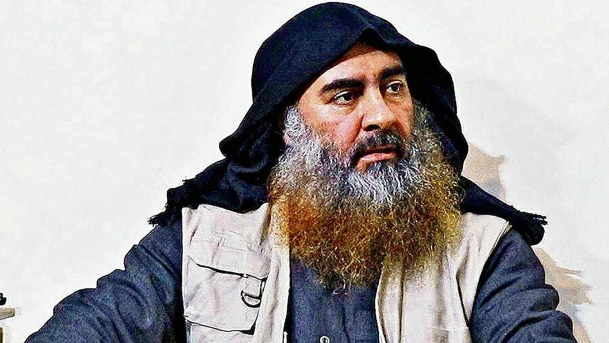
At dawn on 27 October 2019, US special forces killed Abu Bakr al-Baghdadi, the leader of the Islamic State organisation (IS, or Daesh), in a military raid on a village in the northern province of Idlib. IS announced Baghdadi’s successor as Abu Ibrahim al-Hashimi al-Qurashi, although his true name, his former rank in the organisation, and his nationality remain a mystery. Despite the rapid succession, IS will face problems filling the vacuum left by Baghdadi and maintaining cohesion. It could also be weakened by internal factionalism or sustained pressure by the powers that seek to eradicate it.
Whoever the new leader is, he will not possess Baghdadi’s authority and power because both the sources of his personal legitimacy and the material resources at his disposal are considerably less. Baghdadi led an organisation that managed to defeat an alliance of Iraqi, Iranian and American forces and carve out a state the size of the United Kingdom, supported by financial resources estimated at $2.2 billion and a fighting force of some 30,000 people. Without this territorial and financial base, al-Hashimi will find it more difficult to maintain the cohesion and loyalty of allied groups in other countries and its own rival factions.
A smooth succession of leadership within IS is further complicated by the fact that the organisation itself was undergoing a transition. Prior to his death and following the group’s defeat in 2017, Baghdadi was attempting to transform IS from a public-facing, ruling apparatus into an underground group. His killing demonstrates that this transition had not yet been successfully completed, and his successor, lacking Baghdadi’s personal authority, will find making the transition no less difficult.
So what does the future hold for IS? Is its end near? Or will it be able to survive, and even thrive, perhaps re-establishing its caliphate in a different territory?
It is unlikely that IS will be completely eradicated, despite the Trump Administration’s pledge to pursue the organisation to the end. For one thing, IS has cultivated an institutional culture of survival. It has faced leadership vacuums in the past and proved adept at rapidly filling the vacuum and maintaining its equilibrium. In addition, the fracturing of the coalition against it means that it will face less external pressure, giving it the space to recover from the recent blow. While the US succeeded in weakening the group, it has now withdrawn its forces from Syria, thereby removing the biggest threat to IS’s existence. The Syrian Democratic Forces and its fighting units, the YPG, are currently in disarray. Having been ejected from its stronghold in northern Syria, it is currently occupied with meeting the Turkish military incursion and is likely unwilling, and unable, to open a second front against IS. Nor does IS seem to be a priority for the Syrian regime, which is gearing its efforts to confront the armed opposition in Idlib and Turkish forces in northeast Syria. The chaos and instability resulting from conflicts underway in Syria and Iraq may in fact help IS to regain some popular support from ordinary residents seeking protection and security, although its record of draconian rule militates against widespread popular support.
IS is likely to survive, then, but with little potential to restore its caliphate. The new leader does not possess the exceptional resources that were at Baghdadi’s disposal because conditions on the ground have shifted unalterably, and not to the advantage of IS. The new leader would require a territorial base from which he could extract fixed resources, establish an administration, and draw and train fighting forces. None of this is currently an option. Moreover, Baghdadi’s death may exacerbate internal fissures that could weaken IS further, between Iraqis and non-Iraqis and the mother organisation and its affiliated groups in other areas, such as Sinai.
Yet, the ideology shaped by Baghdadi will not disappear with his death. Those who aspire to lead IS will exploit it to the fullest to bolster their legitimacy, particularly as the organisation’s hard power declines. A subsidiary of IS could assume the lead, claiming an alternative leadership base outside of Iraq, and Syria and seek to establish the caliphate there to attract funds and manpower. Whether this succeeds, IS will continue to live, but will likely come to function more like a rebel, guerrilla force waging a war of attrition against its enemies. In fact, it is not unlikely that in the near future, small attacks may be launched on urban centres as IS attempts to boost the morale of its forces following its leader’s demise.
*This is a summary of a policy brief originally written in Arabic, available here: http://studies.aljazeera.net/ar/positionestimate/2019/11/191104082218922.html